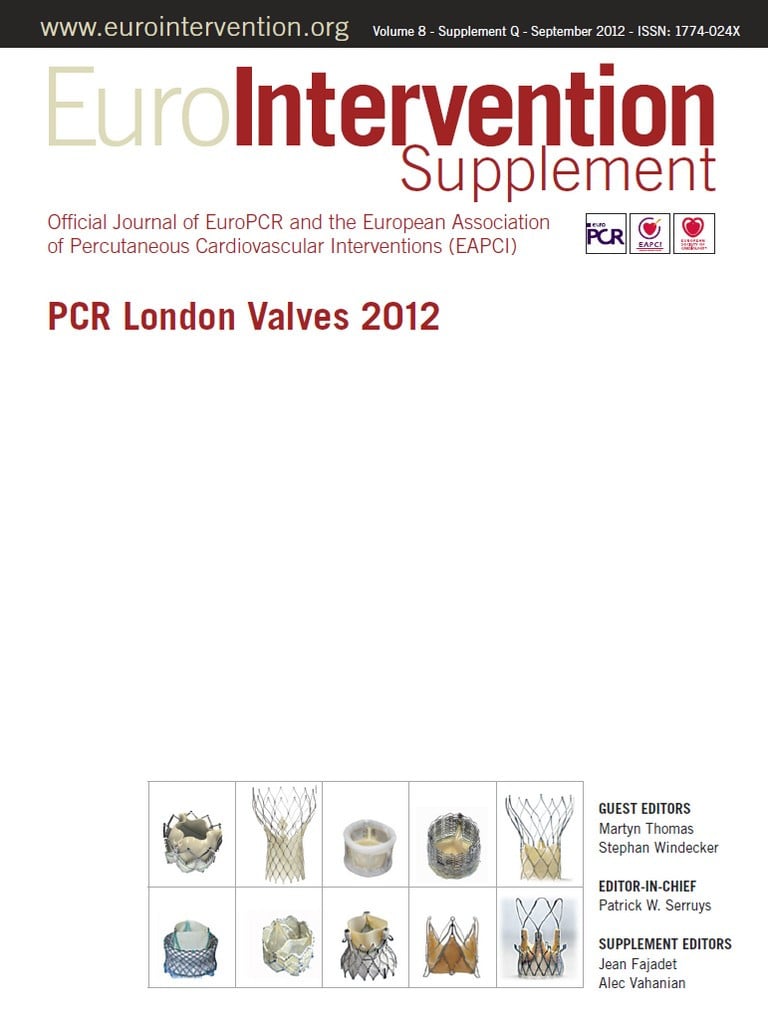![]()
Vascular access in TAVI
Is the percutaneous femoral approach for TAVI always better? A comparison with a femoral surgical cut-down
Aims: Percutaneous transfemoral transcatheter aortic valve implantation (TAVI), with a pre-closure suture-mediated device, represents the most widely used invasive approach, even if a high rate of major vascular complications has been reported in all TAVI studies. We analysed our TAVI experience comparing standard arterial surgical cut-down (SF) to percutaneous femoral access (PF) in terms of complications and costs.
Methods and results: From May 2008, one hundred and sixty patients have been treated with TAVI at our centre. One hundred and nineteen patients were treated through the femoral arteries, the remainder by an alternative approach (direct aortic, subclavian, transapical). In this present analysis we consider only the last 40 consecutive patients (mean age 79.3 years) treated with the CoreValve bioprosthesis through the femoral approach from January 2011. This would be after our initial learning curve of 80 percutaneous femoral approaches. In both groups 20 patients were treated, no major difference in pre-TAVI characteristics was evident, mean age in the PF group 80.8 years (10 females) vs. 77.2 years (11 females) in the SF group. The incidence of major vascular complications was significantly different between the two groups (p=0.008): six patients experienced major vascular complications in the PF group was requiring endovascular treatment with covered stent placement, while none of the patients in the SF group had major vascular complications. The amount of contrast used was superior in the PF group 233±53 cc vs. 148±60 cc in the SF patients (p<0.01). This led to a different procedural cost (excluding the prosthesis): mean cost of the material was 4,589±2,992 euros in the PF vs. 2,204±1,071 euros in the SF group. One patient died at 30 days in the PF group. There was no difference in post-implant hospital stay: 13.4 in PF vs. 11.2 in SF.
Conclusions: Approaching TAVI as a heart team - having cardiologists and cardiac surgeons always involved together also in transfemoral cases - makes it easy to perform a femoral surgical cut-down which in our experience was safer and more cost-effective in comparison to the percutaneous femoral approach.

